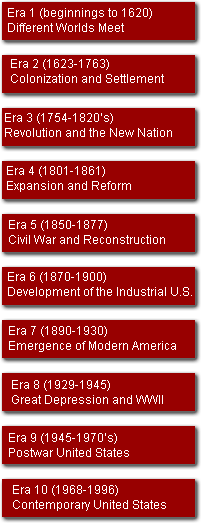 |
 |
 |
 Era 3 Themes ERA 3 HIGHLIGHTS IN NEW
HAMPSHIRE: differences among groups in revolutionary New Hampshire,
Fort William and Mary, Battle of Bennington, Battle of Bunker Hill, the
Revolution on
Connections between New Hampshire
history and events outside the state could hardly be more evident than
in Era 3. Divisions outside of New Hampshire led to divisions within. The
class, economic, and religious ties of Loyalists and Revolutionaries separated
individuals, groups, and regions. The Revolution in
After Governor John Wentworth
left and in the absence of a viable royal government, the state of New
Hampshire declared a provisional government in January of 1776. The New
Hampshire delegates to
New Hampshirites contributed
their share to military events of the Revolution. The 1774 bloodless raid
on casually-guarded Fort William and Mary came after Paul Revere rode north
to Portsmouth to warn that the British were coming to remove the stores
of gunpowder there. The Revolutionaries used that gunpowder later at the
Battle of Bunker Hill. While no battles were fought in New Hampshire, the
state's soldiers were active throughout the Revolution. In addition to
fighting at Bunker Hill, John Stark and New
More people experienced the Revolution on the home front than on the battlefield. The home front can be traced through the activities and fortunes of women, slaves, children, Loyalists, men who stayed home, and government officials. For example, caught up in the ideas of the Revolution, 20 NH slaves petitioned the NH legislature for freedom in 1779; their petition was tabled, even though it contained ideas similar to those found in the Declaration of Independence. Social and political change brought anxiety. Some New Hampshire people depended on religion to accommodate and explain the upheavals they felt. The Shakers, the Baptists, the Universalists, and the New Lights were radical religious sects that formed around the edges of Revolutionary society. New Hampshire was the ninth and deciding state to ratify the United States Constitution in 1788. New Hampshire voters just barely gave the edge to the Federalists, but there was always a strong feeling for states' rights in New Hampshire. The successful fight for
independence opened vexing questions: Who was a citizen? What constituted
virtue in citizens? How could the states ensure a supply of virtuous citizens?
What should
|